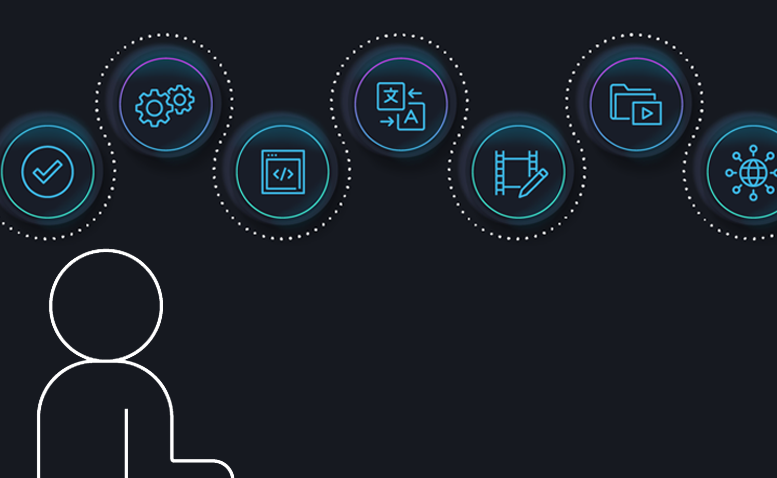
Over the past 5+ years, I’ve seen numerous media organizations take on — and succeed in — building smarter, more efficient content factories. Each transformation looks different, but all reflect the benefits of investment in workflow optimization, automated processing, and resource orchestration. With each shift to a cloud-enabled media supply chain, these organizations have realized their shared goals of moving content through internal pipelines faster, more cost-effectively, and with fewer manual touches.
Even after all that noteworthy progress, however, many media organizations still face a significant bottleneck: the preparation and distribution of their content to multiple platforms.
While they have optimized internal operations, these media companies often continue to rely on third-party providers to manage the last mile of content preparation. In other words, they outsource the outbound supply chain, which involves the packaging and delivery of content, sometimes to hundreds of distribution endpoints, each with its own unique specs. Given the staggering complexity of this work, it’s no wonder that organizations have depended on external specialist providers to get the job done.
Endpoint Complexity
Delivering content to a broad set of global platform requires adapting to a host of differing technical requirements. For instance, different platforms want different metadata structures. One platform calls for a synopsis that’s 140 characters long, while another wants 133. Some expect captions embedded; others need them delivered as sidecar files. Artwork must meet specific size and aspect ratio requirements, and those requirements may differ not just across platforms but also across different partners on the same platform.
Media companies have turned to external providers to handle all these variables, and countless combinations thereof. And those providers have built their businesses on knowing just how to manage all those variations. They’ve developed processes and applied personnel to execute reliably at scale. But that expertise doesn’t come cheap, in terms of either time or cost. What’s more, for organizations adopting this model, a critical part of the supply chain is — for a time — in another company’s hands.
But what if media organizations, as well as external providers, could take care of this vital step differently, in a more cost-effective, automated manner? What if they brought this external process under the umbrella of their own media supply chain optimization?
The Dual Nature of Today’s Media Supply Chains
Up until now, most people have thought of the media supply chain as something that starts at ingest and ends at the creation of a distribution master, or delivery to their owned and operated platforms. But that’s only part of the picture.
In reality, there are two supply chains: one inside your organization, where content is transformed and processed, and another outside, where content gets packaged and delivered to specific platforms.
Again, for organizations that have undergone a shift to cloud-enabled content preparation, the internal chain has been largely automated and optimized. For those and virtually every other media organization operating at scale, the external chain has not.
If you’re already using a platform like Rally to automate your media factory, then you’ve laid the foundation for further automation. You’ve done the work of optimizing your operations. Next step? You go outside, extending your supply chain automation to the content handoff … and beyond.
Automating the Last Mile
In 2021 when we introduced Rally Connect, we saw it as a tool for linking Rally systems together. That’s where we started. But what we’ve developed since then is much more ambitious: a solution for automating content packaging and delivery to hundreds of endpoints, with the intelligence to handle real-world complexity.
To make that possible, we had to do some serious architectural work. Supporting one endpoint is easy. But supporting hundreds, each with its own specs — and in many cases, with exceptions to those specs, depending on who’s delivering the content — is another matter entirely.
That’s why we developed Rally Connect to support the concept of recipes. Within the platform, each recipe — continually updated to reflect current requirements — provides instructions for how content must be prepared and delivered for each destination. And when there are exceptions (as there often are), the Rally platform can accommodate those without creating chaos. As a result, media organizations can handle the processes and the evolving technical requirements that, until now, seemed to make automation and optimization impossible as part of their own media preparation workflows.
Extend Your Media Factory
Wouldn’t it be great if, once you’ve built a modern media factory, you could process, package, and deliver your finished goods yourself? Why spend time and money rewrapping content that’s already been transformed?
Today, it’s possible to systematize the delivery specifications, and keep those systems up to date so that automation can be used to prepare and deliver content to distribution platforms. By expanding your media factory to incorporate the actual delivery of content, you leverage your investment and extend your modern media supply chain. And the benefits are compelling: lower recurring costs, faster turnaround, higher accuracy, and far greater control.
And here’s the big picture: optimizing the last mile is a natural extension of the work you’ve already done. It builds on the investments you’ve already made. If you’ve automated your internal factory, the next logical step is to bring that same intelligence and repeatability to your outbound supply chain.
That’s what Rally Connect enables. It extends the automation and optimization you’ve already done to the final stage of content distribution. In doing so, it opens the door to a unified, end-to-end supply chain where friction disappears, duplication is eliminated, and scale becomes manageable.
Re-examining the Modern Media Supply Chain
Modern media organizations stand to realize even greater efficiencies and opportunity by re-examining and redefining content preparation and delivery. In my next blog, I’ll talk about what this means for how we think about the media supply chain itself, and why the future lies in connecting internal and external workflows within a single intelligent ecosystem.
If you’re ready to take the next step in supply chain automation and bring more of your delivery process in-house, we’d be happy to talk through what that could look like for your team.


